How fenland farmers are cutting greenhouse gases from peat
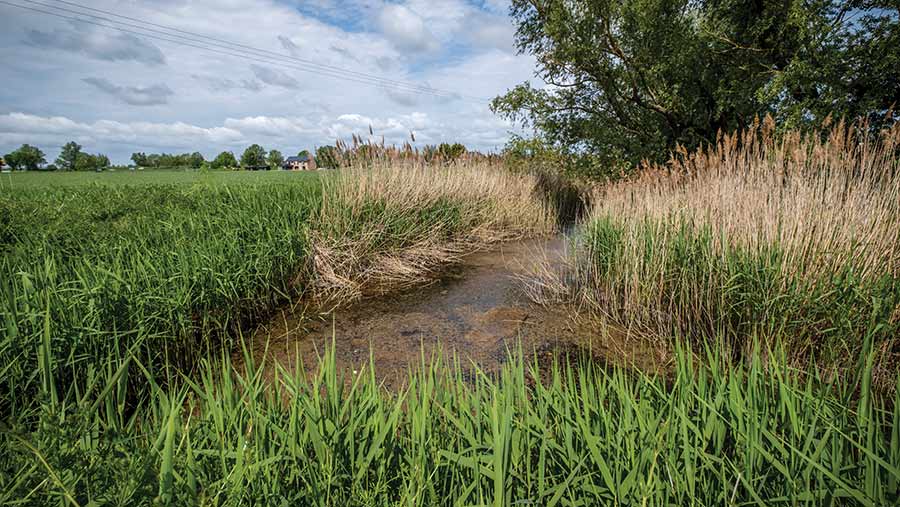 © Jason Bye
© Jason Bye High levels of greenhouse gas emissions (GHG) from the drained lowland peat soils in the Fens are threatening to change how they are managed and what they can produce.
Finding ways to continue to farm on lowland peat soils while also reducing emissions and meeting climate targets is the urgent challenge facing growers and producers in the Fens.
Known for its fertile and highly productive soils, the region makes a vital contribution to food production, growing 33% of the country’s fresh vegetables, as well as providing valuable habitat and ecosystem services.
See also: Soil carbon: Targets and how to store it in arable fields
Despite this economic and social value, the Fens are fragile, acknowledges John Shropshire, chairman of the G’s Fresh group of companies, which is headquartered near Ely, Cambridgeshire.
John is also chairman of Fenland Soil, a not-for-profit organisation dedicated to tackling climate issues relating to agriculture and peat in the Fens.
He believes that the future role of the fenland area is up for debate due to farming practices on drained lowland peat resulting in greenhouse gas (GHG) emissions – mainly carbon dioxide – making them an obstacle for reaching net zero.
“There are no easy answers or quick wins,” says John.
“Drained lowland peat soils emit carbon dioxide and are vulnerable to subsidence, so we need to find ways to limit those, while still producing food.”
A thriving environment and productive farming can go hand-in-hand in the region, despite the unique set of pressures, most believe.
However, conflicting priorities must be addressed so that balance can be restored. That may mean introducing management changes, assessing alternative crops or taking some areas out of production.
What do the Fens deliver?
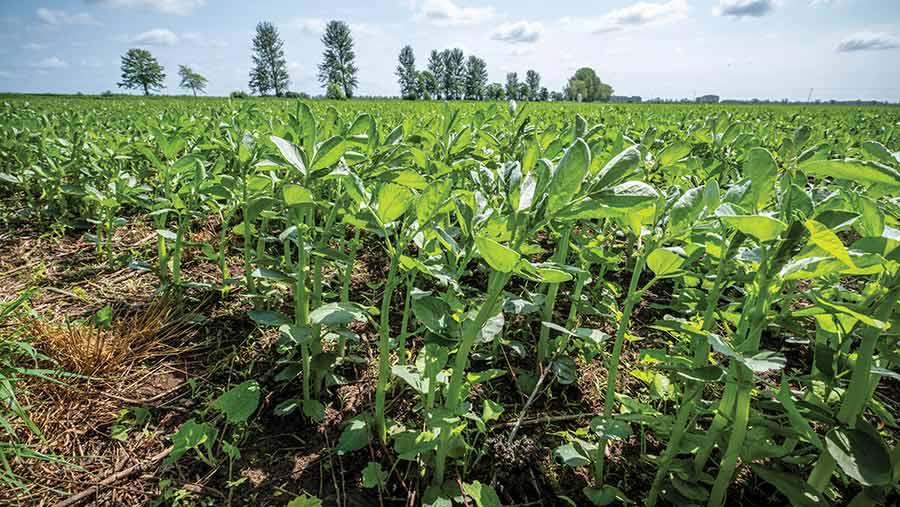
© Jason Bye
- £3.1bn value of the food chain in the Fens
- 33% of England’s fresh vegetables grown
- 21% of bulbs and flowers grown
- 80,000 people employed in farm-to-fork supply chain
- 90% of Fens farmland is Grade 1 or 2
Meeting the challenge
Fenland Soil was set up two years ago to tackle the climate issues relating to agriculture and peat.
Putting equal focus on sustainability, opportunity, innovation and learning, the farmer-led group is working with experts from across the industry to get a better understanding of how they can operate in a more sustainable way.
As professor Chris Evans of the UK Centre for Ecology & Hydrology (UKCEH) explains, lowland peat soils hold more carbon than any other ecosystem and, even where soils have been depleted over time, they make most other habitats look like deserts.
“One hectare of 30cm-deep peat holds as much carbon as 1ha of primary tropical rainforest,” he says.
The problem arises when these soils are drained, as that exposes the waterlogged organic matter to decomposition and compaction, releasing carbon dioxide and causing subsidence.
“Peat needs to be wet or it decomposes,” summarises Chris.
For context, total UK GHG emissions in 2020 were 409m tonnes carbon dioxide equivalent (CO2e), while total peat emissions were 18.8m tonnes – as much as 4% of the total, which cancels out the forest carbon dioxide sink.
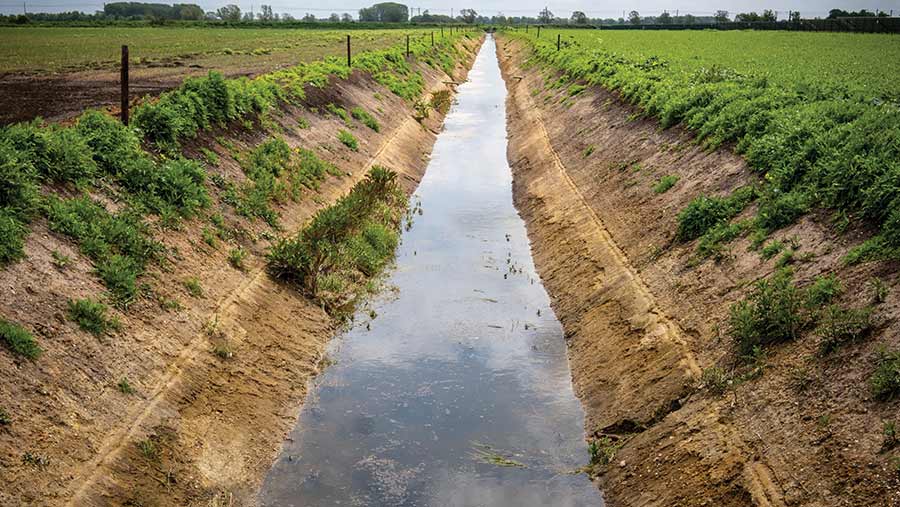
© Jason Bye
Peatland emissions are estimated to account for up to a third of the Fens’ carbon release and represent 1% of England’s total emissions. “If these soils are drained, they will emit,” he says.
“Even wasted peat still emits, albeit at a lower rate. “Wasted peat is the term given to soils where the remaining peat is all contained in a 40cm plough layer.
“Only soils with less than 10% organic matter are approaching equilibrium.
The initial drainage work in the Fens was carried out in the 17th century and has since been expanded and enhanced, but much of the current pumping infrastructure is dated, says Chris.
Raising the water levels is an option, but there is a balance to be achieved between carbon dioxide and methane emissions.
“If you simply flood a system, methane becomes a problem. So turning the Fens into a giant shallow lake isn’t the answer.”
For this reason, ditches are also an issue, he explains. Fully saturated strips in the landscape are “methane factories”, adding to the complexities of moving towards net zero.
A network of flux towers constantly measures emissions from lowland peat to inform decision-making.
This work will continue and is being merged with field management information, so that emissions for different crop types can be established.
For Chris, simply stopping all farming activity in the region is a luxury that the country can’t afford.
“We can’t expect farmers and associated businesses to take such a huge personal loss for the good of society.
“A far better approach would be to grow food in a sustainable way on the most productive areas and manage other areas for carbon and biodiversity.
“There needs to be a balance between food, energy and public goods production.”
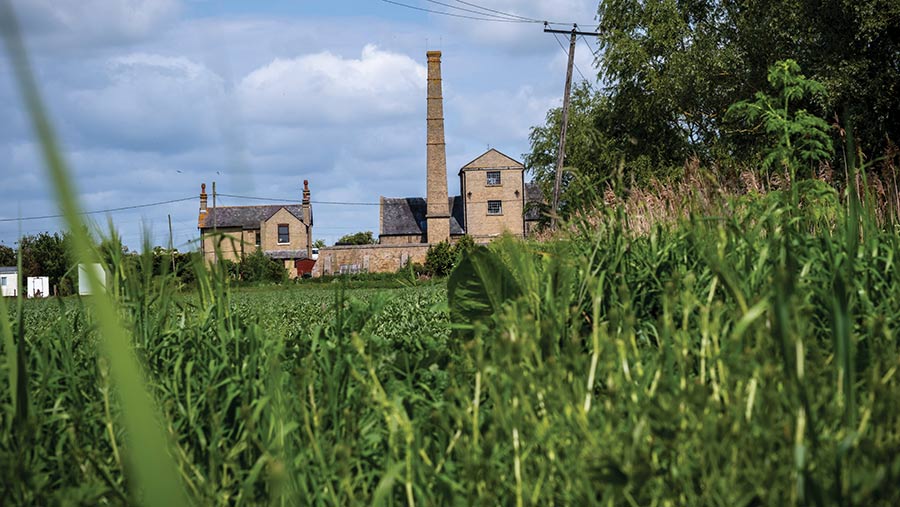
© Jason Bye
Solutions pending
Robert Caudwell, chair of the Lowland Agricultural Peat Taskforce and a farmer in South Lincolnshire, believes finding a sustainable way forward is possible, providing farmers recognise the urgency.
“We must start to act,” he stresses. “I’m confident that there is a farming future in the region, but that may mean you have to change how you manage the land.”
He is still waiting for the government’s response to the taskforce report but points out that different areas of peat need different solutions.
“What works will in the Fens might not work in the Somerset Levels,” he says. “That’s why groups led by local farmers are important and government’s role should be to enable these groups to do what’s required.”
Water is always important with peat, so water level management – something that has been done for years – will play a future role.
“We know the issues and now we need more innovation and research to help us with water management.
“Robert notes that paludiculture (see box below) and emerging natural capital markets have potential for the Fens but stresses the need to be able to stack carbon and biodiversity schemes to make them viable.
Economic considerations
That’s a point shared by Megan Hudson, general manager of Fenland Soils, who says that it is possible to mitigate the risks and grow high-value crops in a different way.
But that farmers and growers are still waiting for guidance from the government and details on what funding will be available.
“The current ELM (Environmental Land Management) proposals don’t meet requirements,” she says.
“There are two options for raised water table management but they simply don’t provide enough money for replacing very valuable crops.”
She also points out that while crops can be grown at raised water tables, dealing with them is very difficult. “Getting them harvested, or carrying out weed and disease control, is problematic.
Even with the advent of new technology, travelling on these soils will be an issue.”
She adds that tree planting is not permitted on the Fens – ruling out an option that applies to farms in other parts of England.
Regenerative farming practices aren’t suited to soils with high organic matter, so that discussion is not relevant either.
Thanks to £96,000 of Discovery Grant funding from Natural England, Megan worked with Elizabeth Stockdale of Niab across 36 farms and three internal drainage boards last year to collect data on soil types, hydrology and productivity.
This information was then used to highlight areas where changes to water table management could be introduced and what other types of funding, such as biodiversity net gain and carbon, could apply.
“Land use management across the 140,000ha of lowland peat in the Fens will be a feature in the future,” predicts Megan.
“Getting the balance right between food production and environmental protection is possible with the right co-operation and willingness to engage.”
While some of the highest emitting crops may be removed or restricted, there will be a whole range of options employed and technology will have a key role, she adds. “This is why we are collecting the data, working with others and sharing our findings.”
What is paludiculture?
Paludiculture is the term applied to farming on rewetted peat and is a system for the production of wetland crops, such as thatching reed, typha and sphagnum.
Farming at higher water tables reduces the greenhouse gas emissions associated with the current agricultural use of these soils.
As such, it could be one component of lower-emitting peat landscapes in the future.
Companies such as Saltyco, a next-generation materials manufacturer, are creating textiles from plants grown in wetland and peatlands. Its first product, BioPuff, is a plant-based fibre fill for insulating clothing.
Water level management
Water level management is key to the future of farming on lowland peat, and measures that help farmers to manage water are required.
Bringing the water level up to 20cm seems to be the point at which balance is reached in terms of emissions – as methane production switches off and carbon dioxide release shuts down.
Another option is to bring water levels higher for some of the year, especially at times when land isn’t being cropped, to prevent soil loss. Adding organic matter and using mulches are also in the frame.
What is being done in other countries?
In Canada, some 35% of the country’s vegetable production takes place on drained agricultural peatland, where there’s an average soil loss of 2cm/year – with consequences for soil quality and productivity.
Since 2016, work has been carried out to address soil degradation, which involves assessment of biomass production and the use of soil amendments.
“Using degraded areas to grow high-yielding biomass crops such as willow and miscanthus – so that we also had enough material from them to use as a soil amendment – was successful,” reports professor Jacynthe Dessureault-Rompre of Laval University.
“A soil amendment rate of 12t/ha a year maintained soil height, Jacynthe notes.
“Using the right amendment at the right rate can compensate for the loss of soil. ”
In Sweden, where soils had to be drained to produce anything, it has been possible to reduce emissions. “It’s not easy and every site is unique,” says Dr Orjan Bergland.
“Our soils don’t behave in the same way – their physical properties mean that they have different oxygen levels when they are drained.”
No effect on emissions was seen when the soil was managed differently, with ploughing and shallow tillage producing the same results.
The same was true of crop type. Soil amendments did have an effect, with emissions dropping by 20%, when plots were treated with 5cm of foundry sand.
“Another finding from our work is that carbon emissions from abandoned peatland do not decrease with time after agricultural practices have ceased.”
In the Netherlands, some 50% of the country’s emissions come from the peat soils that are drained for summer grazing by the dairy industry.
Subsidence is taking place at a rate of 1cm/year, reports Joost Kenskamp of Wagingen University.
There are two national research projects being undertaken to address the issue.
“We have higher emissions from our peat soils than the UK, but lower than those of Germany and Denmark,” says Joost.
Dutch farmers are against raising the water table above 60cm, as it increases the risk to their businesses in the face of climate change, he notes.
“Where that isn’t possible, we have looked at soil amendments and alternative crops.
A thin layer of clay applied in the top of the peat did help to bring emissions down without any detrimental effects.”
What are the options for fenland farmers?
- Crop choice
- Paludiculture/wet farming
- Higher water table
- Surface irrigation/rewetting
- Soilstechnology/robotics
Luke Palmer, FC Palmer & Son, Stretham, Ely, Cambridgeshire
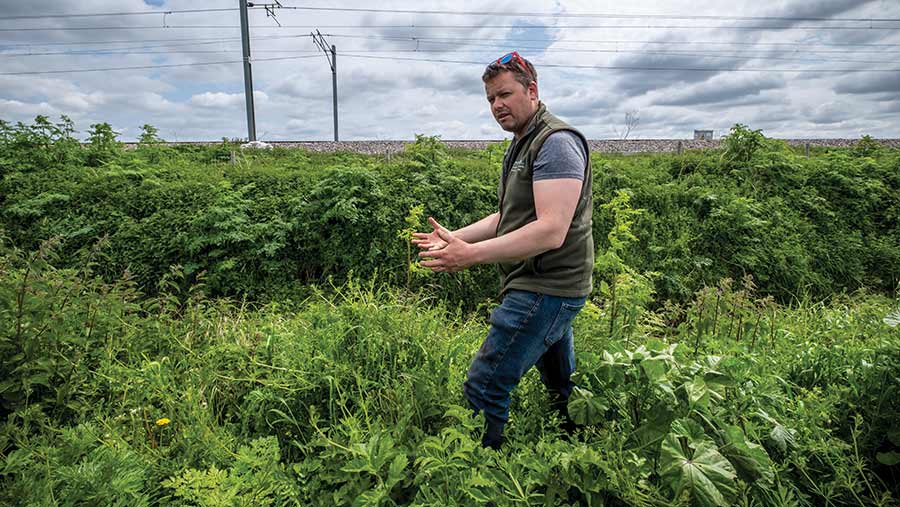
Luke Palmer © Jason Bye
Farming 1,618ha from Stretham near Ely in the Fens, Luke Palmer is very aware of the pressures being brought to bear on local growers as he considers what his farming business will look like in the future.
Luke, who is vice-chairman of Fenland Soil, has always recognised the need to protect his fenland soils. His goal is to pass on the farm to the next generation in a better state.
He has used measures such as higher cutting height at harvest and chopped straw to limit soil loss and damage.
However, the emphasis changed to carbon and meeting net-zero obligations around two years ago, following the Cambridgeshire and Peterborough Combine Authority’s Independent Commission on Climate report.
“We were intent on preventing erosion and degradation – now the situation has been given a different focus,” says Luke.
“Even so, it’s really important that we avoid tunnel vision, as there are biodiversity, social and economic factors at play in this unique landscape, not just carbon dioxide emissions.”
He also makes the point that fen soils are releasing carbon, even when they’re not being farmed.
“Nobody wants to lose or damage their soils, or risk their livelihood, which is why we are collaborating to come up with a common answer on how we move forward.”
Luke’s business is diverse – some land is rented out for vegetable and turf production, and he grows potatoes, sugar beet, wheat, beans, peas and barley.
There are also 98ha of solar panels, two reservoirs – one of which hosts an aqua park – and a joint venture sheep enterprise.
“Some of the farming businesses in the Fens are very specialist agri-businesses, but we have deliberately maintained as much diversity as possible.”
Luke accepts that some areas of the Fens could be taken out of production, but he is concerned about what the future holds if sufficient funding isn’t forthcoming.
“Once BPS has gone completely, we will be exposed.
“Everyone tells us that diversity is the way forward for offsetting or reducing emissions, as well as generating other income streams, but intensifying production is often the most viable option.”
Luke hopes that the future will involve greater integration with Internal Drainage Boards, perhaps with them becoming water facilitation boards, and would like to see funds available within catchments for opportunities such as localised flooding.
“Market-driven cropping will always be part of the mix, but it’s important to recognise that the situation has never been static in the Fens.
“We’re more than happy to trial different techniques and farm in different ways if the data supports that and it makes business sense.”
A trial by the UK Centre for Ecology & Hydrology on his farm last year highlighted some of the complexities involved.
Growing winter wheat at a higher water table resulted in a 25% reduction in carbon dioxide emissions, but also gave 25% less yield.
“We will repeat the work as it was done in last year’s heatwave, so keeping the water levels up proved challenging” he says.
Lowland peatland code
An update of the Peatland Code – a voluntary certification standard for UK peatland projects wishing to market the climate benefits of peatland restoration – now includes fenland peat soils.
This means that for the first time, fenland peatland being restored or rewetted will be eligible for carbon credit registration.
These projects are now expected to attract private investment and support, after it became clear that public funding alone was not enough to cover the costs involved or persuade landowners to change.
“Fens with a minimum peat depth of 45cm are now eligible for restoration under the Peatland Code,” explains code co-ordinator Renée Kerkvliet-Hermans.
“Along with the huge carbon benefit that can be realised for this update, there is also the chance for long-term protection and enhancement of the natural environment.”

